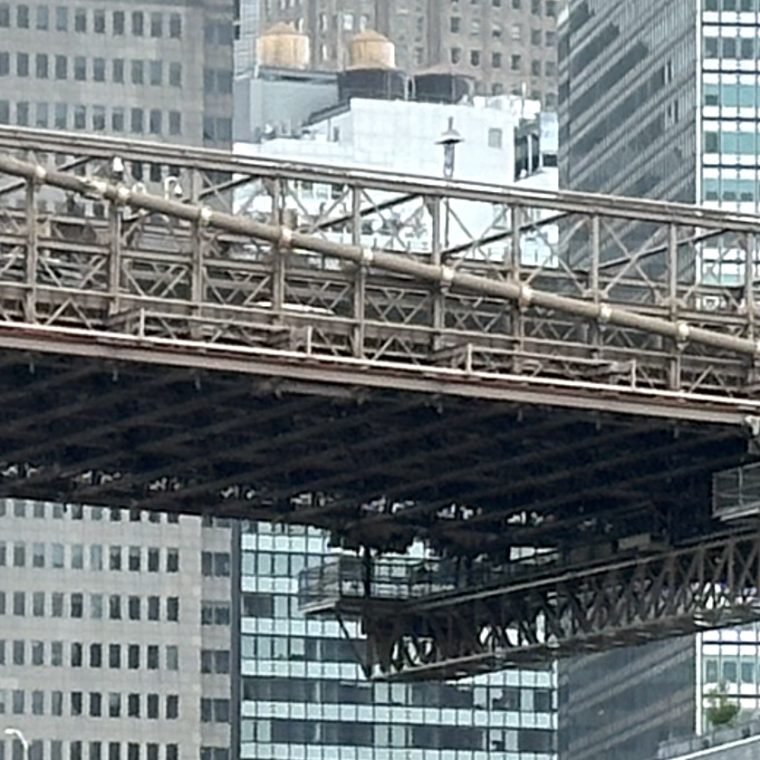Walking along South Street, which is to say along the East River waterfront. First up, the view from Rutgers Street and South Street:

We’ve got a pseudo-dramatic, badly framed view of the Manhattan tower of the Manhattan Bridge, with the elevated FDR Drive blocking most of it. And I was standing below a sidewalk shed. (As a side note, the barricades and construction below the FDR are on-going resiliency construction, as permanent barriers are built to prepare for the next version of Hurricane Sandy.)
Next, about half a mile south, the view from where Catherine Slip used to intersect South Street, before a bunch of streets were demapped in the 1950s for the construction of the Alfred E. Smith Houses:

The FDR continues purpley to the south, blocking any view of the Manhattan tower of the Brooklyn Bridge; the bridge’s west land span is visible and mostly recognizable through by its trusses. The brown girder-bridge below the land span is the ramp that connects the westbound lanes of the bridge to the uptown lanes of the highway. And, hung below the land span we have the maintenance platform used to reach the underside of the bridge.
Starting with the non-controversial items on the list of bridges:
1. The Manhattan Bridge.
2. The Brooklyn Bridge.
Probably not controversial:
3. The FDR elevated highway. It’s not what most people immediately think of when you say “bridge” but viaducts are bridges.
4. The ramp connecting the FDR and Brooklyn Bridge. Anther viaduct.
Probably controversial:
5. The sidewalk shed. These things are still called “sidewalk bridges” by a large percentage of people in the New York AEC community.
6. The maintenance platform. It’s supported by motorized wheels from a rail on each side of the bridge deck – you can see the wheels and rail on the north side of the bridge in my photo – and it spans between those sets of wheels. What do you call an isolated structure that spans horizontally between two supports, carrying vertical load? A bridge. (Note that the closest common analogue to this platform is the kind of industrial crane used inside large warehouses and factories. I still remember the day in my steel-design class when Professor Michael O’Rourke used a crane-rail support column, which I’d never previously heard of, to illustrate a steel column with a high moment-to-axial load ratio.)
TL;DR: design is design is design.




You must be logged in to post a comment.